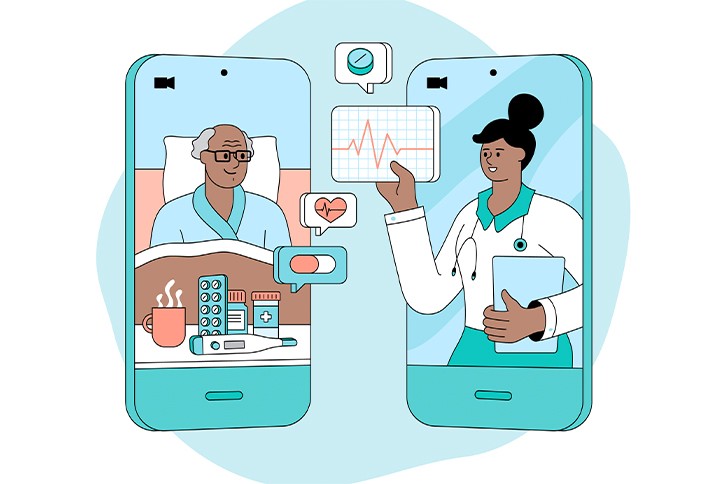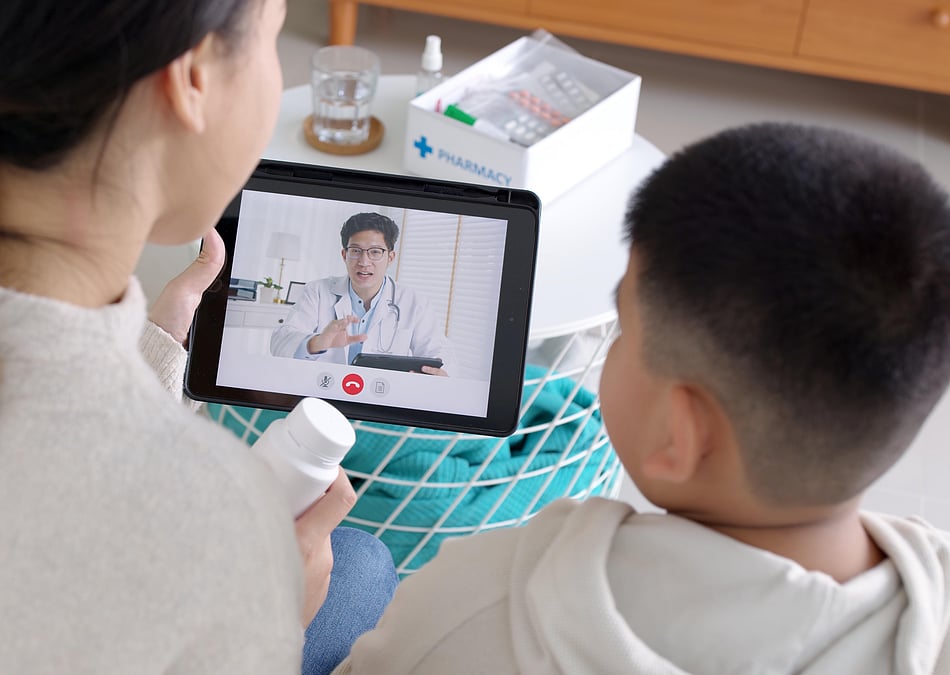Accepting Telemedicine: Changing Healthcare Delivery for a Modern Globe
As we navigate a period characterized by fast digitalization and evolving individual demands, the integration of telemedicine into typical health care techniques offers a compelling recommendation. In discovering the ramifications and details of embracing telemedicine, a nuanced understanding of its diverse effect on medical care delivery in the contemporary globe becomes vital.
The Advancement of Telemedicine
Telemedicine has undergone considerable development over the past couple of decades, changing the landscape of healthcare delivery. Originally conceived to connect the gap in between healthcare companies and patients in remote areas, telemedicine has actually now increased its reach to use a wide variety of clinical services through technological developments.
In the very early phases, telemedicine mostly included appointments using telephone or video clip conferencing. With the expansion of digital devices and platforms, healthcare professionals can currently from another location keep an eye on essential signs, conduct online evaluations, and even do certain clinical treatments. This change towards even more detailed virtual care has actually changed the method medical care is provided, making it more practical and available for people.
Additionally, the assimilation of electronic health and wellness records (EHRs) and telemedicine has actually boosted sychronisation amongst healthcare groups, leading to a lot more reliable and collaborative patient care. Telemedicine reviews. With the continuous innovations in artificial intelligence and remote surveillance devices, telemedicine is poised to continue advancing, providing cutting-edge solutions to enhance medical care results worldwide

Benefits of Telemedicine Adoption
As the usage of telemedicine has actually expanded to encompass a wider spectrum of clinical services and technical capabilities, the benefits of its fostering in modern medical care shipment have actually become progressively evident. One of the key benefits of telemedicine is boosted accessibility to healthcare solutions, specifically for individuals in underserved or remote locations. People can now speak with medical care suppliers without the need for extensive travel, minimizing both time and price barriers. Additionally, telemedicine improves ease for clients by permitting them to set up appointments at times that suit their timetables, promoting far better adherence to treatment strategies.
Additionally, telemedicine can lead to improved health results with boosted treatment coordination. Telemedicine can aid relieve strain on standard healthcare systems by minimizing congestion in clinics and healthcare facilities, inevitably improving general performance and patient complete satisfaction.
Conquering Telemedicine Challenges
Resolving the obstacles inherent in incorporating telemedicine right into existing health care systems presents a crucial yet surmountable challenge for health care suppliers worldwide. Persuading conventional healthcare providers to take on telemedicine calls for comprehensive training programs and continual assistance to make certain smooth integration.
In addition, governing obstacles and reimbursement constraints position significant obstacles to the widespread execution of telemedicine. Numerous state and nation regulations pertaining to telemedicine methods develop an i was reading this intricate setting for suppliers to browse. Compensation policies that do not appropriately compensate for telemedicine solutions can hinder health care organizations from purchasing this cutting-edge method to care shipment.

Enhancing Patient-Provider Communication
Browsing the landscape of telemedicine challenges lights up the critical requirement for enhancing patient-provider communication in modern-day health care delivery systems - Telemedicine reviews. Efficient interaction lies see page at the heart of high quality medical care stipulation, and in the world of telemedicine, where physical cues might be restricted, clear and compassionate communication ends up being much more extremely important
Enhancing patient-provider interaction in telemedicine entails numerous methods. Supplying clear directions, establishing realistic assumptions, and making certain open lines of interaction for follow-up inquiries can enhance the overall patient experience in telemedicine.
Future Trends in Telemedicine
Anticipating the advancement of telemedicine, innovations in modern technology and health care delivery systems are leading the method for ingenious methods to patient treatment. One of the future trends in telemedicine is the assimilation of man-made intelligence (AI) and artificial intelligence formulas to improve diagnostic capacities. AI can examine huge amounts of person data quickly, helping doctor in making much more accurate medical diagnoses and treatment choices. Additionally, using online truth (VR) and enhanced reality (AR) in telemedicine is getting momentum. These modern technologies can create immersive experiences for both people and service providers, facilitating online consultations and medical training simulations.
By leveraging telemedicine, healthcare service providers can reach clients in remote locations, improving Get More Information access to high quality care. These improvements in telemedicine hold excellent pledge for transforming health care delivery and enhancing individual results in the future.
Final Thought
In final thought, telemedicine has revolutionized healthcare distribution by improving accessibility to care, increasing efficiency, and boosting individual results. Despite challenges, the advantages of telemedicine fostering are clear, paving the way for far better patient-provider interaction and future developments in healthcare. As technology proceeds to advance, telemedicine will certainly play an important role in changing healthcare distribution for a contemporary world.

Anticipating the development of telemedicine, improvements in technology and medical care distribution systems are paving the way for cutting-edge techniques to individual care. These advancements in telemedicine hold excellent assurance for transforming healthcare delivery and boosting individual outcomes in the future.
In verdict, telemedicine has changed health care delivery by enhancing accessibility to care, enhancing performance, and enhancing person results.